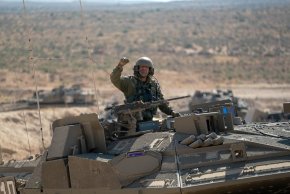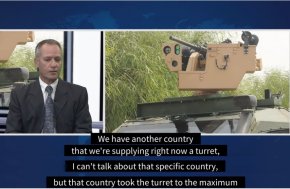Agrees with you that Rafael is a competent company, it uses launch customers to fund projects. The question is why Singapore works more with Rafael and not any others, such as Elbit, which is equally successful if not more? This likely lies with 2 factors -
Singapore-Israel relationship @ political level and Defence matter is not a Commercial matter (in Singapore context). Rafael being a government owned company, this might enable more and easier G2G cooperation in defence matter, however, I have no firm idea on this.
Every company, government, or organized consumer, has the option to diversify suppliers as much as they want, but it usually comes down to one supplier, aka single source buy, because the supplier and consumer usually have a relationship beyond the mere buyer and seller.
If the consumer trusts a certain supplier as it knows its products and policies very well, it may still choose it over another less known supplier even if their product is more expensive.
All Israeli defense companies can either talk to a customer on their own, or through SIBAT, a government agency for the control and marketing of defense products.
For Rafael, independently communicating outside the scope of SIBAT is more difficult than Elbit. So it boils down to the reputation that Rafael has in Singapore and its familiarity there.
Similarly, Elbit is very successful in places where Rafael's business footprint is scarce.
This
same article also mentioned, Singapore revealed that the Gil (SPIKE LR?) antitank missile, which is manufactured by Raphael/Rafael, was developed in cooperation between the two countries.
And you can also find countless articles saying it was developed in cooperation with any country that eventually bought it.
Rafael, being a well established company, does not sell binary products - it adapts them to the customer's needs (requires extra resources for the company) to make the product more appealing.
For example a customer needs a unique communications protocol between the CLU and missile, or it needs weaker (and cheaper) optics, or use the CLU's remote user application to a different tablet or whatever. That all means Rafael will be working with that customer, together, to adapt their product to them.
Again if not mistaken, it was not commercially available till some years later. Hence SAF and IDF were the initial users for SPIKE LR for a couple of years. As for SPIKE MR, it was never in service with the SAF, but was with IDF prior to the launch of SPIKE LR.
Question - why restricts SPIKE LR's availability to others during the late 90s till early 2000s?
It don't make sense for Rafael but it does for Singapore.
The Spike is operated by, what, 34 countries? I don't know when exactly each one acquired one variant. But Rafael's not restricting their products like that.
Most buyers only use one or two variants - does it mean they're restricted in any way from buying other variants? No. And despite the 5th gen Spikes entering production a couple years ago, it's still used only by a select few, despite demonstrations to many. Does it mean anyone's restricted from buying it? No.
Keep in mind the Spike was only first developed around the 80's. Its worldwide success was exponential, not linear. It was always accelerating in its acquisition by others.
For SPIKE LR2, it was likely a project to replace SPIKE LR, as SPIKE LR has reached its end of shelf life (initial batch). Moreover SPIKE LR2 seeks to be an economical replacement solution by using as many existing systems as possible - very SAF style (but of course not unique to the SAF) of reuse strategy to lower replacement cost.
Just because Singapore had certain requirements that were very logical and straightforward, does not mean those were concepts that anyone had to pioneer and were unique to the SAF.
The LR2 and ER2 variants were a new generation of ATGMs. The new features they added, were necessary for a full integration with new technologies that Rafael began to aggressively market at the same time, like the BNET SDR and FireWeaver.
Additionally, the Spike LR had many customers worldwide, a sizable portion of which do not have particularly large defense budgets, and so reuse was very important.
Rafael wanted to market this missile as an upgrade that was intuitive to buy and use, not as a whole new system.
You can't deny MATADOR was the first to have this dual capability/roles and it was an initiative from Singapore. Singapore role here is much like a path finder, due to its own needs, and the rest follows if they find it relevant.
The MATADOR used the German-Singaporean Armbrust as a basis, but the Armbrust was not a dual purpose weapon - it had distinct warheads for each type.
We do not know the exact share of work that Rafael had in the project, or why it bought DND Nobel for the MATADOR. So we cannot make such conclusions.
Now SAF anti armour systems, namely MATADOR, SPIKE SR & LR2, all have this dual capability/roles. If they don't come as part of the SAF requirements, where do they come from? Which Army has this stringent requirement?
Practically the entire customer base of Spike, and more. Even our adversaries have clear needs for such warhead selection tech.
The Spike SR and LR2 and MATADOR were not developed for Singapore. They were developed for a very wide range of customers, with the IDF as launch customer.
If the IDF had no such requirements, and Rafael's main customers also had no requirements for dual purpose warheads, Rafael would not make it an integral part of the system, but rather an option per customer, because dual purpose warheads cost more and are a compromise of capabilities.
The need for multipurpose medium to high caliber rounds was realized a very long time ago. Not the 90's. The need for the same capability for ATGMs appeared when some countries created sufficient stockpiles of them to start lobbing them at infantry as well.
You have to understand that Rafael does not develop products that the IDF has not placed a requirement for - at least 90% of the time.
I have to say, you are wrong on this.
@ 9:22-9:27 he said, a specific country (Singapore is the only one using it as of now) took the turret to the maximum.
Yeah, because Singapore is the only customer for the FULL system. But the full system was in development long before the SAF selected Rafael as a supplier. I've already explained in full why the Samson's development is independent of the SAF.
The most capable variant of the turret is currently tested on the Namer, but Rafael is not referring to it as its own product because it's a joint project with other companies, primarily Elbit, and is not listed for export.
The Samson and its subsystems have been a market success long before the Hunter, and outside Singapore, and the all-in-one is just them sticking multiple big systems in one package.
As Singapore provide its requirement, Rafael being an system integrator, it has to be familiar with Hunter's operating concept. How has this influence Rafael's NGCVS? This is something I'm curious about.
Conceptually? This is something talked about in international defense forums and shows, where industry also give their input, and listen to others. This predates the Hunter.
As for Rafael's ability to provide full solutions for the NGCV, it has a lot to do with its past work on full solutions it created, not integrated.
It has been making BMS for many years, so it has experience with big data management.
It has been making resilient aerial weapons for god knows how long, so it has experience with automation in target recognition, acquisition, and engagement.
And of course more niche systems like ground based missile tech and APS for decades as well.
It is true that the systems are available but the capabilities are not, unless someone integrate it, someone initiate it with their requirements. For this, Singapore took the opportunity and initiated the development for All-in-one turret.
No it did not.
It was initiated by a resurgent market for medium caliber turret systems.
I simply said Carmel project and Rafael's NGCVS was announced post 2017. Again, as per
this, Israel’s MoD Research and Development Directorate (DRDD) had revealed Carmel project's requirements in Aug 2019, and
this program only started 3 years prior to that, while Hunter started as early as 2006.
Then you do not understand what the Carmel program is. It's simply a demonstration program that ended more than a year ago. It has no strict requirements.
It is part of a larger program called Kaliyah (Future Land Combat Group) first published in 2012, and which is set to be finalized around the early 30's. There will be more demonstrations similar to the Carmel under a different name.
Can you provide material on this? Thanks in advance.
That's still classified.

wavellroom.com



